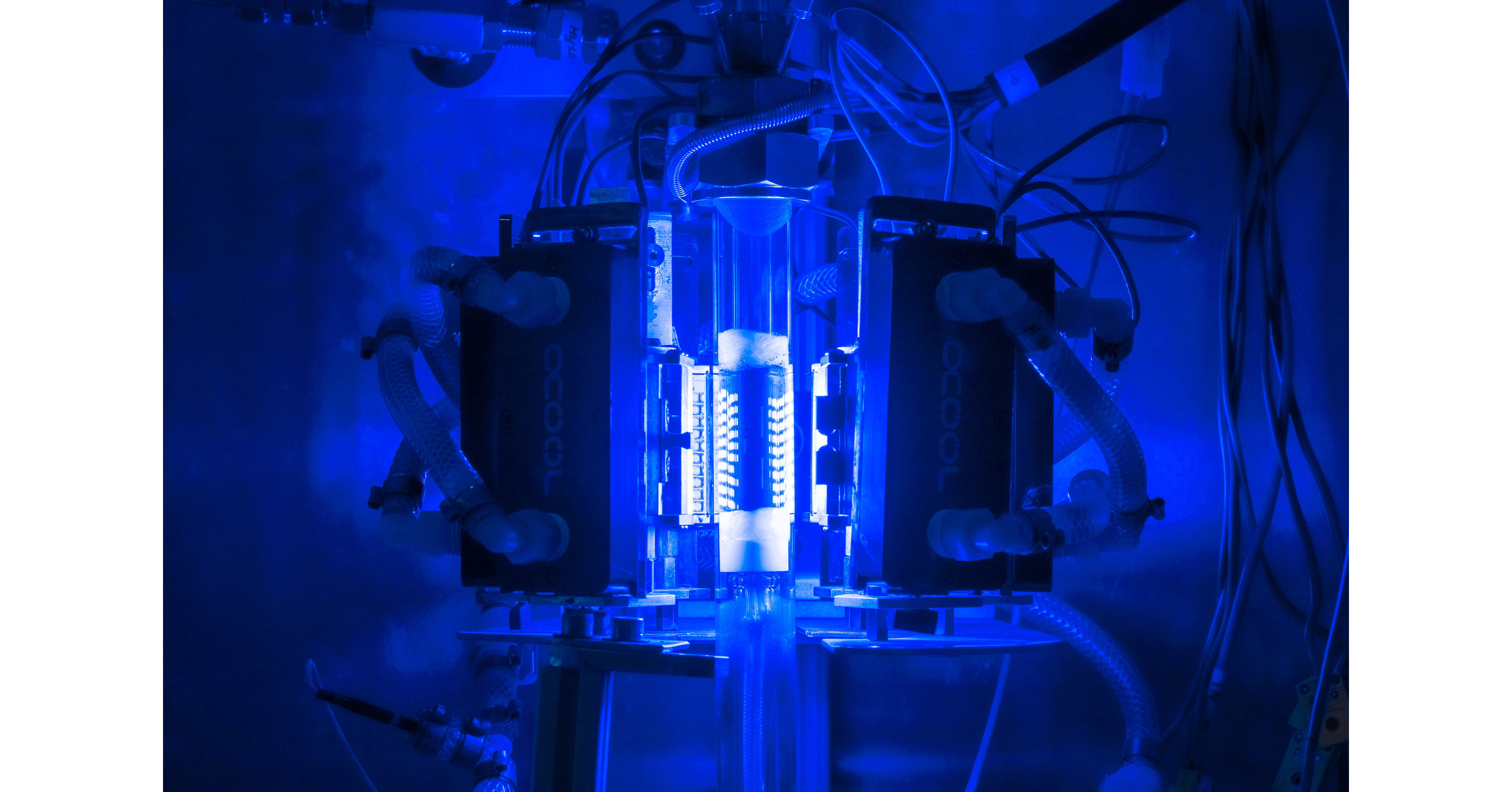
Fighting Climate Change with Used Gas: Syzygy Plasmonics and RTI Achieve Breakthrough in CO2-to-Fuel Conversion
Published by Todd Bush on May 15, 2024
There's good news for the environment! Syzygy Plasmonics, a company on a mission to clean up the chemical industry, has joined forces with RTI International, a non-profit research institute, to achieve a major breakthrough. Their collaboration has successfully demonstrated a new method for producing clean fuels – not from fossil fuels, but from captured carbon dioxide (CO2) and methane (CH4), potent greenhouse gasses contributing to climate change.
This is a significant development, especially for the transportation sector, which is a major source of emissions. But why is this collaboration so important, and how exactly does this technology work?
RELATED: Syzygy Plasmonics Demonstrates Groundbreaking CO2-to-Fuel Solution with RTI International

Why Decarbonize Transportation?
Transportation, encompassing everything from our cars to airplanes, relies heavily on fossil fuels like gasoline, diesel, and jet fuel. Burning these fuels releases greenhouse gasses like CO2, trapping heat in the atmosphere and causing climate change. To tackle this issue, we need to find ways to decarbonize transportation, meaning we need to find alternative fuels that produce less or even zero greenhouse gas emissions.
Enter Syzygy Plasmonics' Innovative Technology
Syzygy Plasmonics has developed a game-changing technology: a method for converting captured CO2 and methane into low-carbon fuels. Here's the exciting part: these fuels can be used in existing engines, eliminating the need to modify vehicles or infrastructure.
The technology utilizes "light-driven reactors" that convert the captured greenhouse gasses into a valuable gas mixture called syngas. This syngas then feeds into a Fischer-Tropsch (FT) unit, which refines it into various fuels, including sustainable aviation fuel (SAF), diesel, gasoline, and even methanol.

>> In Other News: Syzygy Plasmonics and RTI International Sign Agreement to Demonstrate Sustainable Fuels Production System
A Brighter Future for Transportation
The implications of this breakthrough are vast. Imagine using sustainable fuels derived from captured greenhouse gasses to power our airplanes, trucks, and ships. This could significantly reduce the carbon footprint of the transportation sector, a major contributor to climate change.
Trevor Best, CEO of Syzygy Plasmonics, emphasizes the potential impact: "At scale, we're talking about significantly reducing and potentially eliminating the carbon intensity of shipping, trucking, and aviation." This technology can be a major step towards cleaner air and a more sustainable future.
Insights from the Leaders
The success of this collaboration is a testament to the dedication of both Syzygy Plasmonics and RTI International. In an interview, Dr. Sameer Parvathikar, Director of Renewable Energy and Energy Storage at RTI, expressed his enthusiasm: "The results of this demonstration are encouraging and represent an important milestone in our collaboration with Syzygy."
Challenges and Opportunities
Developing this innovative technology wasn't without its hurdles. But the potential benefits outweigh the challenges. Syzygy is now working on scaling up the technology for commercial use. This involves finalizing partnerships and locations for building large-scale CO2-to-Fuel plants.
However, wider adoption depends not just on the technology itself but also on regulatory and market factors. Creating supportive policies and fostering a market for sustainable fuels will be crucial in making this technology a mainstream solution.
A Future Powered by Light
Syzygy Plasmonics' technology offers a glimpse into a future powered by clean energy. Imagine a world where the very gasses contributing to climate change are transformed into the fuels that power our transportation. This breakthrough has the potential to revolutionize the way we produce energy and combat climate change.
The journey towards a sustainable future requires continued research and development in renewable energy technologies. With continued investment and collaboration, this breakthrough by Syzygy Plasmonics and RTI International can pave the way for a cleaner and greener tomorrow.
Subscribe to the newsletter
Daily decarbonization data and news delivered to your inbox
Follow the money flow of climate, technology, and energy investments to uncover new opportunities and jobs.
Latest issues
-
The $9B Deal That Almost Didn't Happen
Inside This Issue 💰 The $9B Deal That Almost Didn't Happen ⚖️ IMO Rules Understate Benefits of Utilising Captured Carbon, Says GCMD 🌾 Corteva and bp Launch Biofuel Feedstock Joint Venture Etlas 🔬 ...
-
Nebraska's 3-Plant Ethanol CCS Gamble Pays Off Big
Inside This Issue 🌽 Nebraska's 3-Plant Ethanol CCS Gamble Pays Off Big 🧊 New Evaporative Crystallizer Design Accelerates Direct-Air Carbon Capture ✈️ From SAF to Solar: DHL’s Bold Steps Toward Net...
-
SAF Output Doubled, So Why Is IATA Sounding Alarms?
Happy New Year from Decarbonfuse! As we wrap up 2025, we want to thank you for being part of the growing Decarbonfuse community. Your engagement and feedback have helped make this platform a trust...
Company Announcements
-
Capstone Green Energy Holdings, Inc. (the "Company” or “Capstone”) (OTCQX: CGEH), together with its subsidiaries, a leading provider of clean technology solutions using ultra-low emission microturb...
-
Duke Energy Florida, a subsidiary of Duke Energy, unveiled its DeBary Hydrogen Production Storage System in Volusia County, marking the first demonstration project in the United States capable of u...
-
ESG Clean Energy, LLC ("ESG"), developers of Net Zero Carbon Footprints and clean energy solutions for distributed power generation, announced today it has signed a licensing deal with Viking Energ...
-
LanzaTech Achieves Guaranteed Performance At Japan MSW-To-Ethanol Plant
Collaborative pilot at Kuji facility showcases robust ethanol yields using LanzaTech’s fermentation technology Achieved ethanol yields exceeding guaranteed performance for over 14 consecutive d...